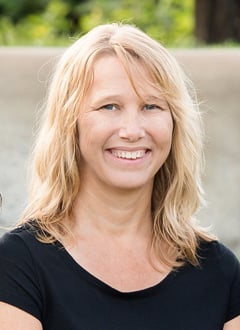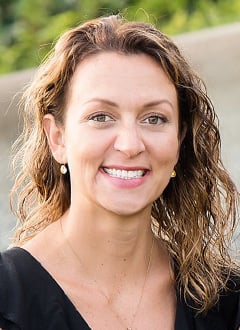
Years ago I was conferring with a first grader named Lucas. It was January, and he was making a nonfiction book about eagles. He was illustrating a page where he’d written, “Eagles have sensitive eyes,” and as we talked about how he knew this interesting fact, he asked me, “Do you know what I want to be when I grow up?”
Years ago I was conferring with a first grader named Lucas. It was January, and he was making a nonfiction book about eagles. He was illustrating a page where he’d written, “Eagles have sensitive eyes,” and as we talked about how he knew this interesting fact, he asked me, “Do you know what I want to be when I grow up?”
“What?” I asked.
“A firefighter and an illustrator,” he said.
“Really?”
He explained. “Yes, because it’s a helpful job, and if I’m at home working on a book, I can just quit on it, and go to the fire, and when I get back home my book will still be there waiting on me. You can use all the time you want.”
He knew this to be true, as he’d been working on his eagles book for many days and still had lots he wanted to do.
I’ve never forgotten this exchange. Of course the fact that I caught it on tape allows me to revisit it whenever I want, where I see a much younger version of both myself and the little boy with the wide smile and fabulous mullet (“All business in the front, all party in the back,” he once told me) who’s all grown up now.
And no, in case you’re wondering, I don’t know if his life plan worked out that way or not. But it was a good plan, wasn’t it? I like helpful jobs. And illustrators.
What struck me that morning, and strikes me still, is how Lucas knew himself in that way. At the ripe old age of six, he’d had enough experience making books to understand the temporal nature of work that unfolds over time. He’d had enough experience to know that he was just the kind of person who could stay with a project, direct his own actions, and realize his intentions. He felt comfortable and confident enough in his work to imagine a future that included him doing it every day. It’s what he wanted to be.
Well, actually, it was one of the things he wanted to be.
But think about how much puzzling through it must have taken for Lucas to figure out how he could manage his two dream jobs at the same time. Clearly, this young writer and illustrator was not just going through the motions; he was deeply reflective about his work.
I’m not at all surprised that I thought of Lucas when it came time to introduce you to Teaching Writers to Reflect. In so many ways, he represents precisely the vision Anne, Colleen, and Deana say they have for their students: “that their writing experiences be layered with rich reflection, so that as they write, they not only produce specific products, but they develop as writers who know for themselves what they are doing and why.” In their classrooms, they pursue this vision with a laser sharp focus on the role that reflection plays in the construction of identity. They know that if children are to become agentive writers who can wield power with a pen or a keyboard, reflection will be key to that becoming.
Some children, no doubt, are just naturally reflective. I don’t doubt that much of Lucas’ thoughtfulness about his work was just part of who he is. But all children— and adults for that matter—can be taught to be more reflective. This teaching begins with building in time and expectation for reflection. It begins with simple questions: What kind of writing do you most like to do? What’s challenging for you about writing? It begins with modeling, with children watching adults who stop in the middle of things to wonder aloud about something that’s occurred.
What I learned from working with Anne, Colleen, and Deana on this book (I was privileged to be their editor), however, is that there is so much more we can do to teach children how to reflect, but we have to take this work on with intention. We can’t leave it to chance. The frame they use for this teaching—remember, describe, act—is very intentional, it positions reflection at the center of writing workshop, and it represents a powerful habit of mind that can serve children across the day and throughout their lives, not just when they are writing.
…
I have been teaching in, researching through, and writing about workshops for many, many years now, and I truly believe that this piece of the work, the reflection piece, is what’s missing in so many classrooms. And it’s not missing because of anyone’s willfulness or deliberate rejection of it. We’re just busy. It’s tough to get everything in as it is, so going through the motions helps us get wherever it is we’re trying to go.
But in the lovely, authentic voices of Colleen’s and Deana’s second and third graders, I was reminded again and again throughout the book of how enormously valuable it is for children to stop, reflect, and think about who they are at one precious moment in time. Like their student Jim who said, “I wrote a book called “Sharks” and really like to write comic books, but I worry about Swiss cheese, spiders, and holes.” When I read this I thought, “You know, Jim doesn’t get this moment back. He will only be this writer with these joys and these worries once in his life. How lucky he is to have teachers who gave him time to stop and think about who he is in this moment.”
Reflection gives us that. It gives us the chance to, as Lucy Calkins has said, hold our lives in our hands and declare them treasures. But it does so much more, of course (not that there needs to be anything more), and in this book the authors show us how students become better writers when they learn how to learn from their own experiences. Anne, Colleen, and Deana also show us how they become better teachers when they stop long enough to listen and learn from their students.
I love this little gem of a book. I believe it’s got important work to do in the world. I love the fireflies on the cover. I know that if you are holding this book in your hands, you’ve caught the light of it and you can use it to brighten your path forward in this work.
No need to hurry.
As a little sage once taught me, you can use all the time you want.
…
Learn more about Teaching Writers to Reflect at Heinemann.com
 Follow us on Instagram @heinemannpub to stay up to date on the latest books, your favorite authors, and upcoming events!
Follow us on Instagram @heinemannpub to stay up to date on the latest books, your favorite authors, and upcoming events!
 Anne Elrod Whitney (top) is Professor of Education at the Pennsylvania State University. Colleen McCracken (center) is a second-grade teacher and Deana Washell (bottom) is a third-grade teacher at Easterly Parkway Elementary School in State College, Pennsylvania.
Anne Elrod Whitney (top) is Professor of Education at the Pennsylvania State University. Colleen McCracken (center) is a second-grade teacher and Deana Washell (bottom) is a third-grade teacher at Easterly Parkway Elementary School in State College, Pennsylvania.




